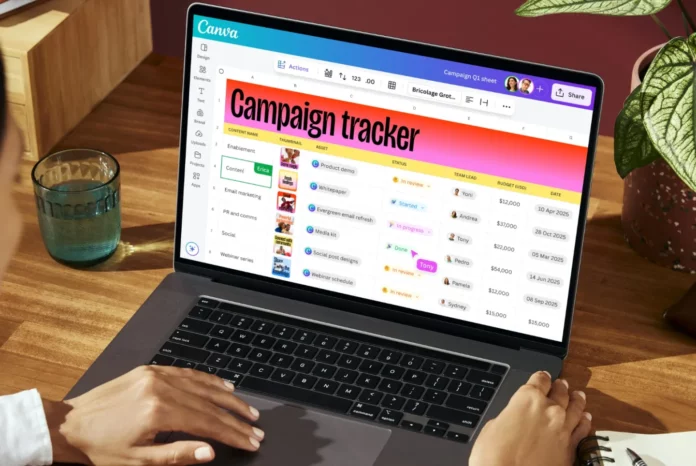Canva is launching its newest smorgasbord of AI-powered generative workspace tools in an effort to bring everything Microsoft, Google, and Adobe have to offer into one platform. Canva ‘s Visual Suite is being redesigned to combine design and productivity tools in a single interface, as well as add new features for coding, photo editing, spreadsheets, and AI chatbots.
They will join a collection of office suite tools to be released in 2022, such as Canva Docs and Canva Whiteboards, Canva’s answer to services like Microsoft Word, Google Docs, and FigJam. Having established itself as a platform for marketing and design, Canva now hopes to attract more office teams and companies to its community of 230 million users by adding a visual component to traditional work programs.
The Visual Suite 2.0 update allows users to create and edit documents, presentations, animations, and websites in a single design, giving teams a unified format for collaborating on multiple tasks simultaneously. “This eliminates the need for separate tools, fragmented workflows, and disparate files,” Canva said in a press release. “Entire campaigns – from planning and briefing to design and delivery – can now happen in one seamless, collaborative space.”

Canva Sheets is a more creative approach to typical spreadsheet programs, allowing users to combine text with visuals. Data can be imported from HubSpot, Statista, Google Analytics, and more, according to Canva, and the AI-powered Magic Insights feature automatically scans data to identify notable patterns or findings. Data can also be transformed into a variety of interactive graphs with the Magic Charts feature, which aims to make it easier for users to turn raw numbers into infographics, reports, and animated visualizations.
Canva Code is a generative coding assistant with artificial intelligence, similar to Gemini Code Assist or GitHub Copilot, both owned by Microsoft. Users can give it text prompts to create widgets, websites, and other interactive content “without the need for coding or external tools,” according to Canva.

Meanwhile, the new Canvas chatbot, which the company describes as a “conversational creative partner,” brings all of Canva’s AI tools together in one window to make it easier for users to access them quickly. From there, you can use voice or text prompts to edit photos, resize designs, and create text, slides, and images.
On the creative side, Canva has also updated its photo editor to include features similar to those that Adobe has implemented in its professional Photoshop software. The photo editor now allows users to automatically change or remove background objects by clicking on them, as well as create artificially intelligent backgrounds that “take into account lighting and layout,” according to Canva.









